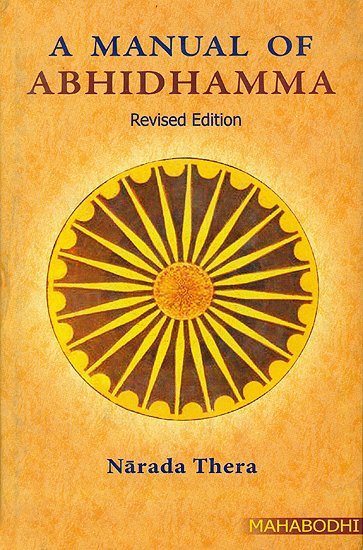A Manual of Abhidhamma
by Nārada Thera | 80,494 words | ISBN-13: 9789380336510
In the Abhidhammattha Sangaha there is a brief exposition of the Law of Dependent Origination, followed by a descriptive account of the Causal Relations that finds no parallel in any other philosophy. Edited in the original Pali Text with English Translation and Explanatory Notes by Narada Maha Thera....
§ 3.
tattha cittam tāva catubbidhara hoti:-
- kāmāvacaram,
- rūpāvacaram
- arūpāvacaram,
- lokuttaram c'ati.
§ 3.
Of them, consciousness, first, is fourfold namely:-
- Consciousness pertaining to the Sensuous Sphere,
- Consciousness pertaining to the Form-Sphere,
- Consciousness pertaining to the Formless Sphere, and
- Supra mundane consciousness.
Notes:
5. Kāma is either subjective sensual craving or sensuous objects such as forms, sound, odor, taste, and contact. By kāma is also meant the eleven different kinds of sentient existence-namely, the four states of misery (apāya), human realm (manussaloka), and, six celestial realms (sagga).
Avacara means that which moves about or that which frequents. Kāmāvacara, therefore, means that which mostly moves about in the sentient realm, or that which pertains to the senses and their corresponding objects. As a rule, these types of consciousness arise mostly in the aforesaid sentient existence. They are found in other spheres of life as well when objects of sense are perceived by the mind.
6. Rūpāvacara, Arūpāvacara respectively mean either that which pertains to rūpa and arūpa jhānas (ecstasies) or that which mostly moves about in the rūpa and arūpa planes.
Rūpalokas are planes where those who develop rūpa jhānas are born.
A question now arises - 'Why are these distinguished as rūpalokas when there are subtle material bodies (rūpa) in heavenly planes too?' The commentarial explanation is that because beings are born in these planes by developing jhānas based mainly on rūpa kasinas, - material objects of concentration such as earth, water, fire, etc.
Arūpalokas are planes without material bodies. By the power of meditation, only the mind exists in these planes.
Ordinarily both mind and body are inseparable, but by will-power, under exceptional circumstances, they could be separated, just as it is possible to suspend a piece of iron in air by some magnetic force.
7. Loka + Uttara = Lokuttara. Here Loka, means the five aggregates. Uttara means above, beyond or that which transcends. It is the supra-mundane consciousness that enables one to transcend this world of mind-body
The first three classes of consciousness are called lokiya (mundane).
